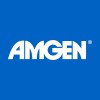
Glucagon Resistance in Patients With NAFLD
Non-Alcoholic Fatty Liver DiseaseNon-alcoholic Steatohepatitis1 moreThe investigators propose that the sensitivity to glucagon in hepatic lipid metabolism is impaired in subjects with non-alcoholic fatty liver disease (NAFLD) and steatohepatitis (NASH). Moreover, they propose a dys-coordinated, reduced glucagon sensitivity in hepatic lipid metabolism and endogen glucose production in patients with NAFLD and NASH compared with healthy subjects and patients with simple steatosis. This reduced sensitivity may be the basis of a more severe dyslipidemia and the production of increased concentrations of toxic lipid intermediates in plasma and muscle tissue. The study will include healthy subjects with obesity and subjects with simple steatosis and NASH, tested at basal glucagonemia and moderate hyperglucagonemia to mimic insulin resistant levels during simultaneous somatostatin infusion and replacement doses of insulin and growth hormone. Infusion of palmitate, VLDL-triglyceride and glucose tracers in combination with indirect calorimetry as well as skeletal and adipose tissue biopsies will be employed to assess free fatty acid and VLDL-triglyceride kinetics (turnover, and oxidation) and hepatic fatty acid-esterification.

A Clinical Trial to Evaluate the Efficacy and Safety of MXP22 on Liver Health
Non-Alcoholic Fatty Liver DiseaseA randomized, double blind, placebo controlled clinical trial to evaluate the efficacy and safety of MXP22 on liver health

Safety and Pharmacokinetics of CMX001 in Impaired Hepatic Function and Healthy Subjects
Hepatic ImpairmentThis is an open-label, non-randomized, multi-center, sequential group, safety, tolerance, and Pharmacokinetic study of a single dose of CMX001 administered at 2 mg/kg of ideal body weight rounded to the closest 20 mg in fasted healthy control subjects compared with that in fasted subjects with moderate and severe hepatic impairment.

A Study to Evaluate the Pharmacokinetics, Safety, and Pharmacodynamics of Olpasiran in Participants...
Hepatic ImpairmentThe primary objective of the study is to evaluate the pharmacokinetics (PK) of a single dose of olpasiran in participants with mild, moderate, or severe hepatic impairment compared to participants with normal hepatic function.

Hepatic Inflammation and Physical Performance in Patients With NASH
Non-alcoholic Fatty Liver DiseaseThe aim of the study is to examine the influence of hepatic inflammation or damage on physical performance (maximal oxygen uptake, VO2max) depending on the histologic state of the liver. The study population are patients with fatty liver disease and non-alcoholic steatohepatitis (NASH). All study participants obtain an individual training plan with individual and group training sessions for a period of 8 weeks. At the beginning and end of the training phase a sport physiological examination is carried out. In the study group the effect of regular examinations is surveyed by surrogate parameters of liver inflammation.

The Effect of an RBAC Supplement (BRM4) on NAFLD
Non-Alcoholic Fatty Liver DiseaseThe purpose of this study is to investigate the effects of Rice Bran Arabinoxylan Compound (RBAC) on outcome variables in persons with non-alcoholic fatty liver disease (NAFLD). This nutritional supplement is made from a water soluble extract of rice bran that has been partially hydrolyzed by the action of a natural enzyme complex extracted from Shiitake mushroom.

The Effects of PXR Activation on Hepatic Fat Content
Non-alcoholic Fatty Liver DiseaseThis study investigates the effects of pregnane X receptor (PXR) activation on hepatic fat content in healthy volunteers. Rifampicin (an antibiotic and also an efficient PXR activator) and placebo will be given for a week to volunteers. Hepatic fat content is measured with magnetic resonance imaging and blood samples are collected at the end of each study arm. The investigators' hypothesis is that rifampicin causes accumulation of fat to the liver.

Magnetic Resonance Imaging (MRI) Fat Quantification of the Liver
Non-alcoholic Fatty Liver DiseaseObesityFatty liver in the obese is a common finding; some cases develop steato-hepatosis which in the long-term can lead to liver cirrhosis. The effect of bariatric surgery on fat distribution in the liver has so far been studied with liver biopsies and single voxel MR techniques. With this trial investigators present a new, whole organ MR-quantification of liver fat and describe changes after bariatric surgery in visceral and subcutaneous fat.

Duvelisib in Hepatically Impaired Subjects Compared to Healthy Subjects
Hepatic ImpairmentTo evaluate the pharmacokinetics, safety, and tolerability of IPI-145 when administered to subjects with chronic hepatic impairment and in matched healthy subjects.

Influence of Probiotics Administration Before Liver Resection in Liver Disease
Liver FibrosisLiver Cirrhosis2 moreSurgical resection is one of the curative treatment modalities for HCC. Limits are postoperative septic and liver functional complications related to an increase in bacterial translocation and systemic endotoxemia. Bacterial translocation is a passage of bacteria and bacterial degradation products from the intestine to the portal circulation. The endotoxemia secondary to bacterial translocation, stimulates endothelial production of nitric oxide (NO). NO is also a potent inducer of membrane instability, responsible for an increase in the permeability of the vascular endothelium and intestinal mucosa, possibly contributing to a worsening of bacterial translocation. Probiotics are live microorganisms which when administered in adequate amounts, provide a health benefit on the host ((Health and Nutritional Properties of Probiotics in Food Including Powder Milk with Live Lactic Acid Bacteria - Cordoba Argentina October 2001). Data from experimental and clinical literature show a significant effect of probiotics on the improvement of liver function and a decrease in infectious complications in patients with chronic liver disease. The proposed study would evaluate the effect preventive and therapeutic in a population of surgical patients, in whom the intestinal portal and hepatic inflammation promotes postoperative complications.
